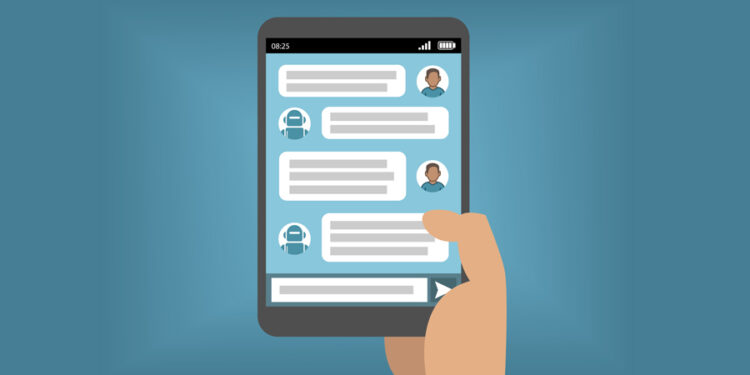Virtual assistants, chatbots, scheduled bots… conversational systems equipped with technologies such as AI or * machine learning * are increasingly able to understand natural language.
Instant messaging applications are communication platforms that have allowed us to be in touch, anytime and anywhere, through our smartphone. Its popularity has led to the development of software capable of automatically performing various tasks. We talk about conversational artificial intelligence systems and, in particular, of the virtual assistants, chatbots and scheduled bots.
A chatbot is a software created so that you can have conversations with users as if you were really human, thanks to the fact that it is equipped with artificial intelligence. Bots have become an indispensable element to encourage such interaction between brands and users because they can be able to processing natural language and maintaining a consistent conversation with a person when programmed with artificial intelligence and machine learning.
The first bot appears in 1964
However, although we think it is a recent concept, the fact of conversing with a machine and that it is able to interact is not something new. It was in 1964 when Joseph Weizenbaum developed a program capable of conversing with one person: Eliza. We could point to it as the first bot, which is even said to be able to pass Alan Turing’s test. Years later, bots came to the big chat platforms.
So, if this concept is not new, why are many bots and chatbots currently being developed? Now, bots are not only able to execute what has been predefined, but they can learn, improve and adapt to each user thanks to technologies such as artificial intelligence and natural language processing.
Scheduled chatbots and bots
As we have said, a bot is AI software designed to execute tasks without needing the help of the user such as, for example, book in a restaurant, select dates in the calendar or show information of interest to users. The most frequent use of bots is in messaging apps, and this is where chatbots appear.
One of the main features to keep in mind is that a chatbot uses natural conversational intelligence, the problem is that it fails because they have not yet managed to interact with natural language 100%. For this reason the scheduled bots were created.
An example is Slack, the messaging service for communication within the company, where chatbots help manage tasks such as expenses. Big companies like Twitter,Telegram, Facebook, Uber or Google already develop their own bots. Although one of the current challenges is that machines understand requests expressed in natural language and respond in a coherent and personalized way.
For example, if we try the Facebook bot ‘1-800-Flowers‘ we note that it does not respond 100% to natural language and makes you choose from default options.
However, if we ask ‘Rain Poncho’, a bot that we found on Facebook to inform the user of the time, we observe that it can have a significant interaction despite being a programmed bot.
This technology still needs to be improved, but it’s tempting that instead of using an app or website to order food, a chatbot could order food for you.
The Amazon assistant that goes the extra mile
Siri and Cortana, the virtual assistants of Apple and Microsoft, have been faced with a strong rival: Alexa, the assistant of Amazon it incorporates features to make daily life at home easier and goes beyond scheduling appointments, setting alarms or sending emails.
The most obvious difference is that it is a cylindrical physical object who listens to requests and resolves them. You can install it anywhere in the house and it fulfills its tasks without having to hit any button. Order the purchase, control the home automation of the home, receive the weather forecast, inform us of searches, control the music, make purchases on the Internet, play games, control your appointment calendar, order an Uber or a pizza, receive recommendations or keep you informed of the current situation, among other things.
There is no doubt that conversational artificial intelligence systems such as chatbots are increasingly present in our day to day. What’s next?








